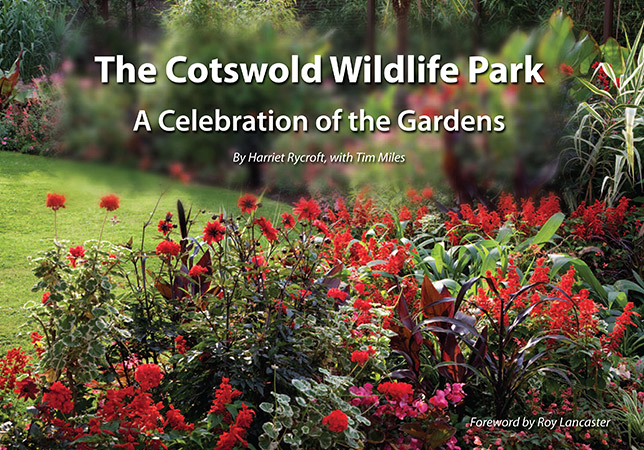
Our February evening talk was by Jan Lambourn who is the Head Gardener at the Cotswold Wildlife Park. Jan gave a fascinating overview of the hard but rewarding work which goes on at the park throughout the year.
We soon learned about the wide range of planting styles, many of which link with and complement the animals’ living spaces. We had Jan’s insights into the thinking behind these planting styles which go beyond the purely decorative – although that is important. The aim is for a sense of exploration as well as shelter and shade – a sense of “plant theatre” using foliage and colour.
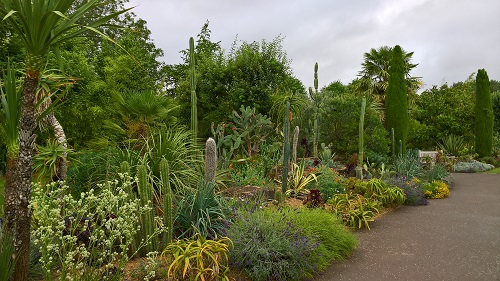
Opened in 1970 the 160-acre wildlife park is home to some 300 species of animals and birds. It comprises a variety of themed areas which lend themselves to differing approaches to planting. These include the walled garden with its various aviaries and free-roaming small mammals, a Woodland Walk with its variety of larger animals, moated paddocks which are home to larger mammals including the park’s now famous rhinos, its giraffes and Bactrian camels, and the caged area for big cats. Not least there is the manor house at the hub of it all, with its mature trees and with its orangery home for red pandas and the nearby giant tortoise enclosure. All these and more are complemented by the gardening skills of Jan’s team.
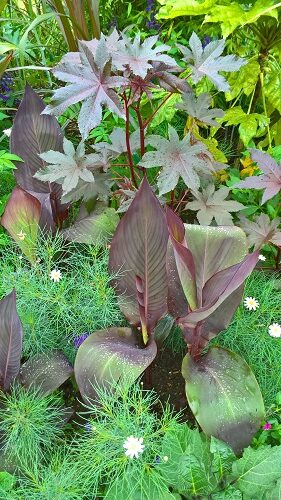
Jan took us through the main elements of the horticultural year, from which it became very clear that there is a balanced synergy between the gardening activity and the welfare of the animals – a relationship which gives the work a unique dimension, as well as a few challenges. She described the seasonal planting activity, with a major focus on summer bedding plants, as well as all the activity around the more exotic tropical plants in their microclimates.
Especially important in this respect is the focus on planting for animals to “browse”, for example bamboos for the red pandas and lemurs and nettles for the giant tortoises, and grasses for nesting birds.
Of note was Jan’s description of the Tropical House with its use of bark mulching to soften the difference between the indoor and outdoor themes creating a unique flow, and also the varieties of pampas grasses which adorn the Rhino paddock, involving much hard work but achieving a fine visual outlook.
Year-round interest has been achieved through a cumulative build-up of plant varieties – springtime snowdrops, wild daffodils and fritillaries for example, and later magnolia, polyanthus, anemones, forget-me-knots, and wallflowers, plus of course the huge varieties planned annually for the summer bedding.
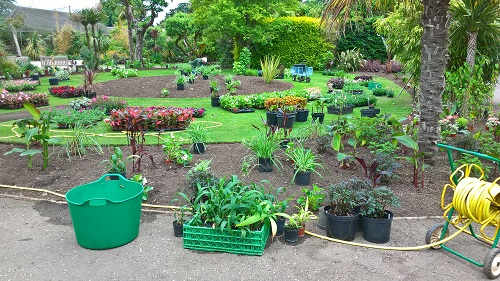
Jan’s descriptions of the changes between seasons were a reminder of the dedicated work of her team, including the underplanting of several thousands of tulip bulbs of different varieties, and the moving indoors under glass of the many cactus plants, succulents such as the splendid aeoniums – and surprising to many of us, spider plants – which adorn the park in summertime. We learned of the maintenance of the myriad hanging baskets of petunias and begonias which are watered on a drip system. Then of course the lifting of the bulbs and laying out the summer planting of canna lilies, geraniums and varieties of bamboo included.
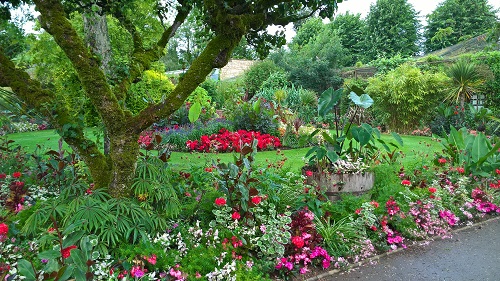
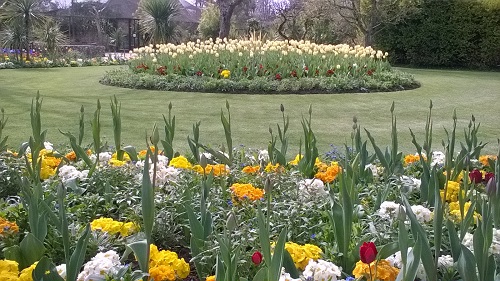
There are many classic herbaceous borders with penstemon, roses, cosmos, and similar traditional planting, but there are experiments now with less formal areas with varieties of narcissus as well as quite stunning meadow mixes supplied by Pictorial Meadows which add a glorious dimension of colour.
All this activity takes place with a few challenges from the all-important creature-residents of the park. Apart from the rogue vole which enjoys digging up bulbs and leaving a suspect trail, or peacocks enjoying the chard and basil in the kitchen garden, there are ring-tailed lemurs who enjoy engaging with humans and breaking things with impunity. All this and more Jan described as part of the interesting relationship her work has in the greater scheme of things.
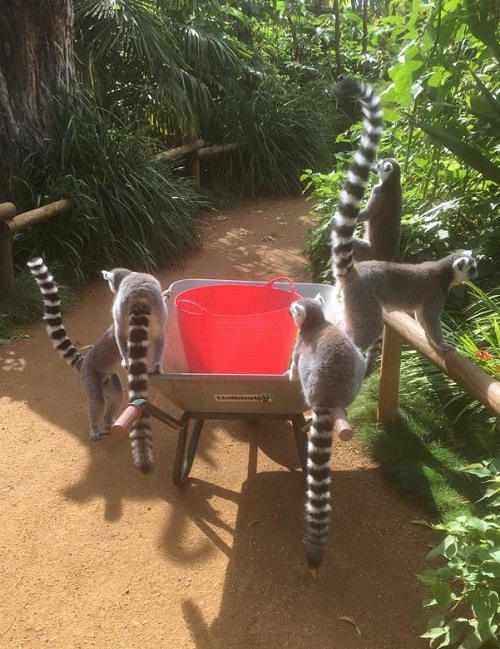
Our review here can only offer a flavour of the work at the Wildlife Park. The 45+ gathering of MUWAGA members and guests certainly enjoyed a fascinating evening – our first since the easing of Covid restrictions – and a reminder of the benefits of our social gatherings. We are grateful to Jan for her enthusiasm and her knowledge, which made for an entertaining and informative time for all.
See more here on the Cotswold Wildlife Park website.
